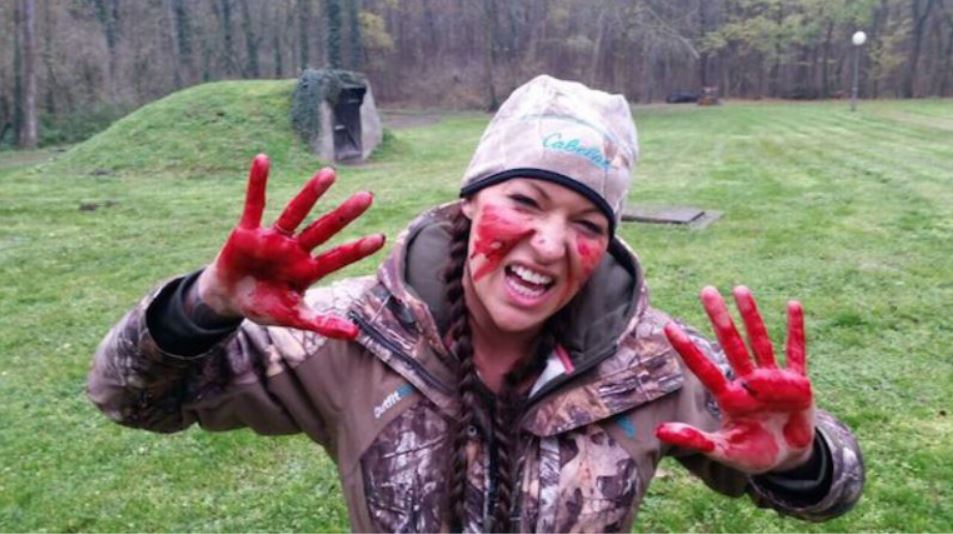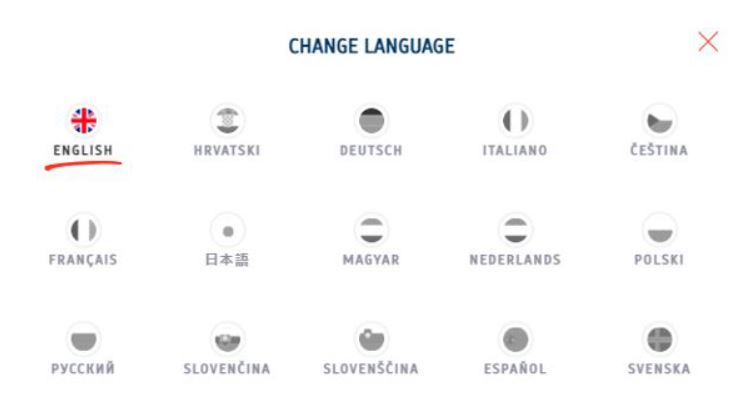Parents of Severely Beaten Girl Remanded in Custody
April 3, 2021 - The parents of a two-and-a-half-year-old girl who has been admitted to hospital with severe head and bodily injuries have been remanded in custody, Slavonski Brod County Court investigating judge Mile Soldo ruled on Saturday.
The mother is charged with hitting the child with inappropriate force. As a result, the girl has ended up in the Hospital for Children's Diseases in Zagreb, where doctors are fighting for her life.
The mother has been remanded in custody because of the risk of obstructing the course of justice by interfering with witnesses. In contrast, the father has been remanded for the same reason, and because of the risk of repeating the crime, Soldo told the press.
The mother is charged with inflicting grievous bodily harm, while the father is charged with violating the child's rights and neglecting and abusing all four of their children.
Investigators suspect that the girl was abused between November 2020 and 31 March 2021, while the other three children, who have been separated from their parents, are believed to have been abused for a longer time.
The couple, residents in Nova Gradiška, have been taken to a remand center in Požega, about 170 kilometers east of Zagreb.
To read more about news in Croatia, follow TCN's dedicated page.
Sinj Tourist Board Reminds Us of Easter Traditions
April 3, 2021 - The Tourist Board of Sinj wants to help us feel festive for this Easter season, so they have prepared an extraordinary video and photo material to celebrate the Easter traditions which have lived on in the families of the region.
The biggest Christian holiday is again celebrated under the new circumstances: separated, but together, cautious, but comforted by the light of the resurrection, which will make the darkness everywhere disappear. The Tourist board regrets that their traditional Easter traditions, including breakfast in the open had to be cancelled again this year, however, they found a way to celebrate.
Local groups dedicated to preserving the tradition, KUD Cetina and the Association for the preservation of the heritage of the Cetina region, as well as the Milardović family, prepared some of the most popular holiday recipes to be presented online.
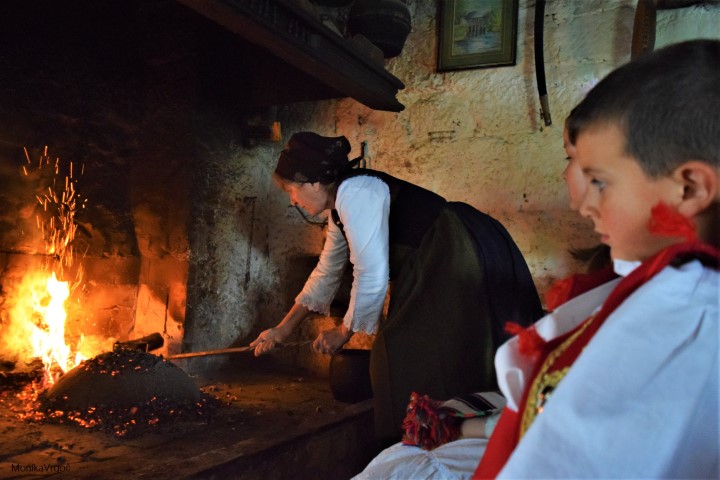
Photo by Monika Vrgoč
On Holy Thursday, lamb and cabbage are traditionally eaten. On Good Friday, traditionally the fast is observed, and cod, trout and frog are prepared. On Easter itself, the traditionally prepared meals are taken to the church to be blessed. The team brings you some recipes for those, published in one of the seminal books by Dika Marjanović – Radica, “Dalmatian Cooking”.
Sinj arambaši, a speciality protected by UNESCO is always on the table for all holidays, and you can read more about them here.
Local pogača (similar to Italian focaccia) is made as a dessert, with sugar, lemon rind and home-made butter – and is characterised by a lot of kneading it needs to be perfect (the recipe calls for a whole hour of TLC!).
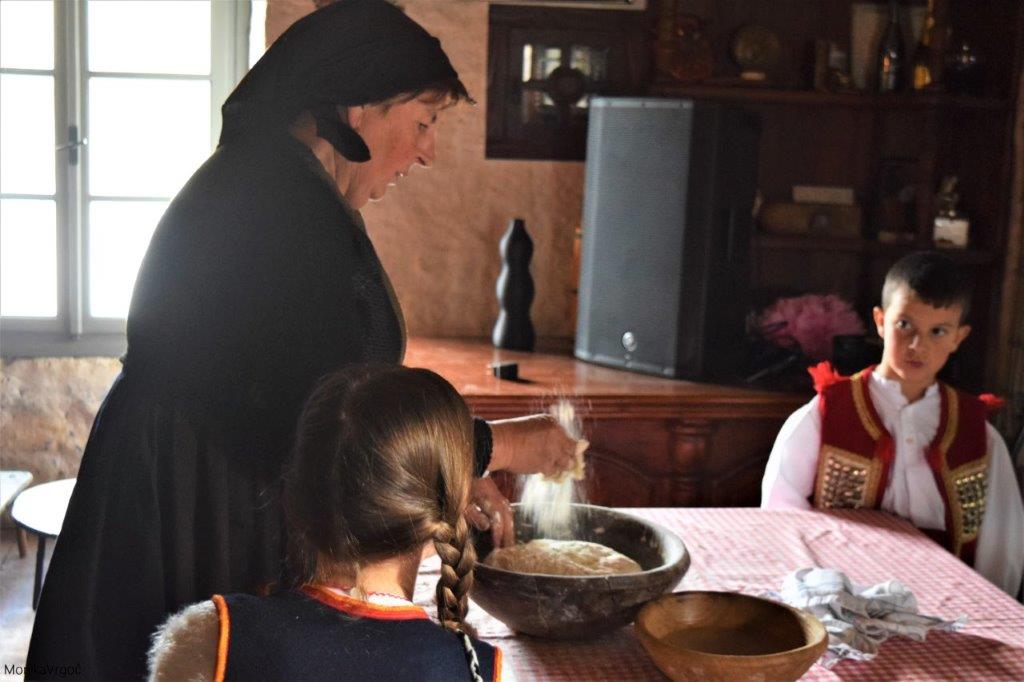
Photo by Monika Vrgoč
Sinj Ravioli (spelt locally rafioli) are also a dessert, and the dough is filled with ground almonds and chocolate, along with some maraschino liqueur.
Sinj Tourist Board wants us to believe that nothing has really changed, in its core, and that Easter continues to be the victory of faith and love, life over death and light over the darkness.
Social Welfare Centre Director Sacked After Domestic Violence Case
April 3, 2021- Branko Medunić has been relieved of his duties as the Social Welfare Center director in the eastern town of Nova Gradiška following a probe into a domestic violence case in which a two and a half-year-old girl suffered life-threatening injuries.
The center's governing council decided on Saturday. It was announced by the Minister of Labour, Pension System, Family and Social Policy, Josip Aladrović, at a press conference.
The girl has been admitted to Zagreb's children's hospital with severe injuries to the head and body, and doctors are fighting for her life. The parents have been arrested, and a criminal investigation is underway.
The Social Welfare Centre has been aware of this family because the father was reported for domestic violence before. The girl was in a foster family for over a year, but the center returned her to her parents at their request.
The parents have partly admitted the crime of violating the child's rights, county prosecutor Mirela Šmital confirmed on Saturday. She said that the prosecution would move to have both parents remanded in investigative custody.
The mother (24) is the first defendant and is charged with five counts of violating the child's rights and inflicting grievous bodily harm. In comparison, the father (27) is charged with four counts of violating the child's rights and inflicting grievous physical harm. The parents are expected to be brought before the investigating judge this afternoon.
Irregularities are found at the social welfare center.
Minister Aladrović said that Medunić was relieved of his duties after an administrative inspection found irregularities at the center. He said that the complete results of the examination would be available no later than Wednesday.
"Social workers do an extremely responsible job which is important for the stability of society. We must all be aware of their responsibility, but any potential irresponsibility must be penalized," the minister said.
"Anyone who causes damage to human life or health will be penalized. We can't afford to make any concessions in that regard. We must make a distinction between people who do their job responsibly and those who do not," he added.
The head of the Directorate for Family and Social Policy, Marija Barilić, said that the girl had been separated early on because of the risk posed by her parents but was later returned to her family, which she said was a mistake.
"It was a mistake. The child should never have been returned to its family. It should have stayed in the foster family," Barilić said.
The Social Welfare Act to be amended
Aladrović announced amendments to the Social Welfare Act to improve the quality of service for beneficiaries. He said that the amendment process had been launched before this tragic event. "I admit that we have structural problems in the social welfare domain, but I am committed to removing them," he stressed.
The amendments would strengthen the system and reduce social workers' work obligations to focus on the essential aspects of their work. The amended law would also promote life-long learning, and a Social Welfare Academy would be established to focus on the professional career of staff at all social welfare centers.
Aladrović said that social welfare centers' operation would be centralized to ensure more efficient management and job standardization and avoid cases like the one from Nova Gradiška.
He announced that under the amended law, family centers would be separated from social welfare centers. "We want to empower the family, that is both our world-view position and our social responsibility."
"We are deeply aware of the challenges we are coping with, but I want to make a clear political message that we will address these challenges efficiently and that we will overcome them," Aladrović said, adding that the Nova Gradiška incident had only "accelerated and simplified" the decision to amend the law.
To read more about news in Croatia, follow TCN's dedicated page.
Highlights of the Week: 5 Big Events in Croatia from March 29 to April 4, 2021
April 4, 2021 - From new epidemiological measures imposed due to the increase in COVID-19 infections to the arrival of Ryanair, here are TCN's five highlights of the week, recapping the big events in Croatia from March 29 to April 4, 2021.
At the end of March, the fight against the pandemic was in its final stages, taking into account the government's efforts to promote the return of the tourist season, the reopening of business in the country, and the announcement of mass vaccinations in Zagreb after Easter. Despite this, the novel coronavirus has once again warned that its presence continues to threaten the population, and this has since manifested in the increase in cases across the country. On the other hand, sporting and cultural events have also stood out as we entered a new month this week.
Croatia U-21 reaches the EURO Tournament Quarterfinals
The eyes were not only all firmly on the senior team, who, after starting the qualifying process with an away loss against Slovenia, got back on track with six points against Cyprus and Malta in Rijeka. Luka Modric also became the most capped player in the history of the Croatian National Team.
Some good news also came for those who follow the younger generations, as the U-21 team won their ticket to the quarter-finals of the EURO tournament in a dramatic fashion. Those led by Igor Biscan failed to win the match, but a Bradaric goal in injury time allowed Croatia to climb to second place, thanks to the other teams' results and goal difference.
Now, the little Vatreni will have to face Spain on May 31.
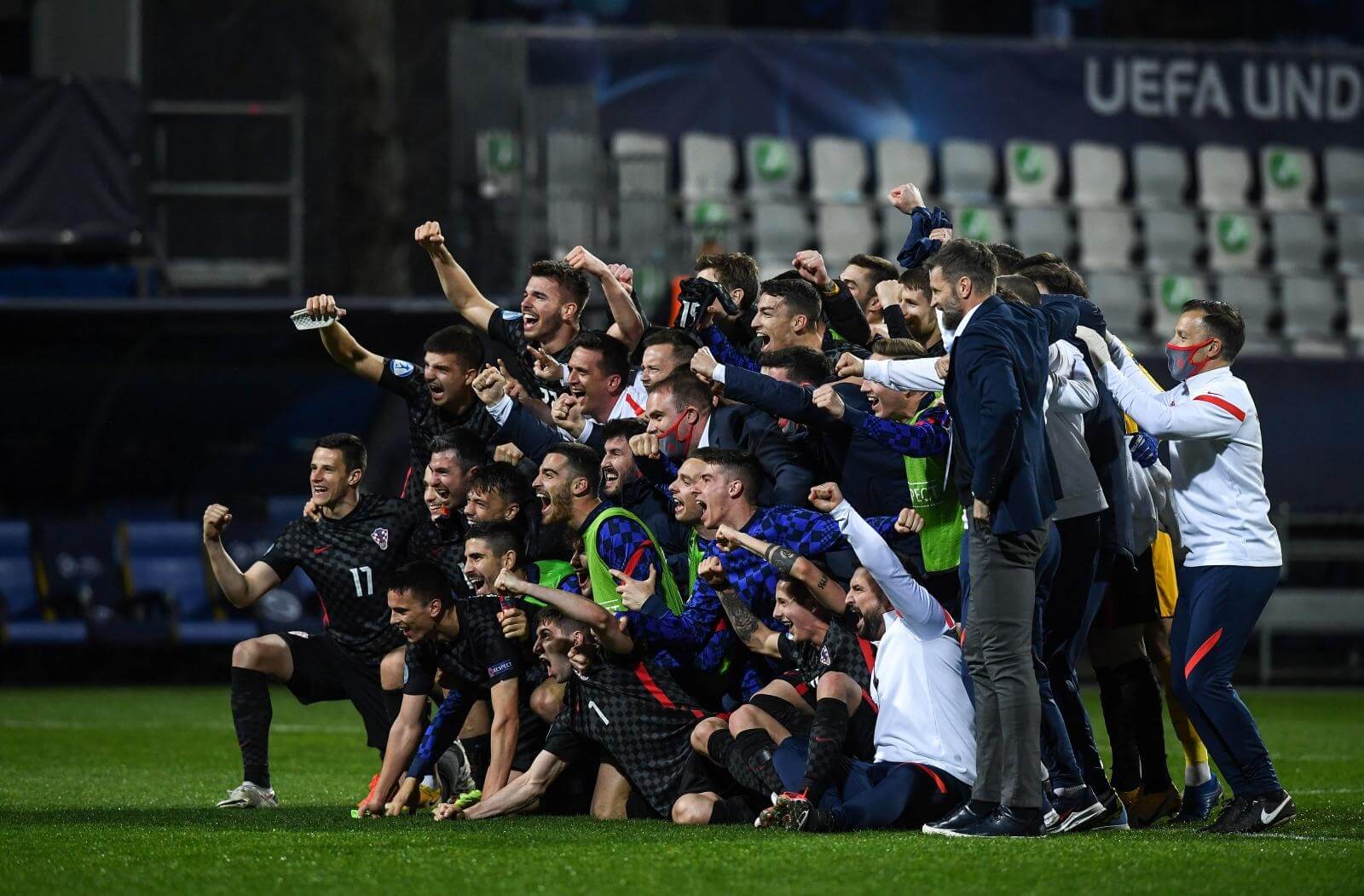
Koper, Slovenia (Credit: PIXSELL)
Ryanair announces flights to Croatia
After several years in which the Zagreb International Airport was in deficit in terms of both airlines and low-cost flights, it finally reached an agreement with the well-known Irish low-cost company Ryanair. This agreement was announced through a virtual press conference, in which it was detailed that the capital of Croatia will now be connected to European cities such as Paris, Brussels, Dortmund, Frankfurt, Karlsruhe, Memmingen, Milan, Rome, Podgorica, Oslo, Gothenburg, and London.
Zagreb wasn't the only city to rejoice with this news, as the airline also confirmed 17 new flights to Zadar International Airport in a separate conference, and passengers will be able to choose from a wide variety of European destinations from July 2021. While many still believe this news might affect the future of Croatia Airlines, others including the company itself assure that the regional base establishment of the popular airline in Zagreb will not only create more jobs but also transform the capital's tourism.
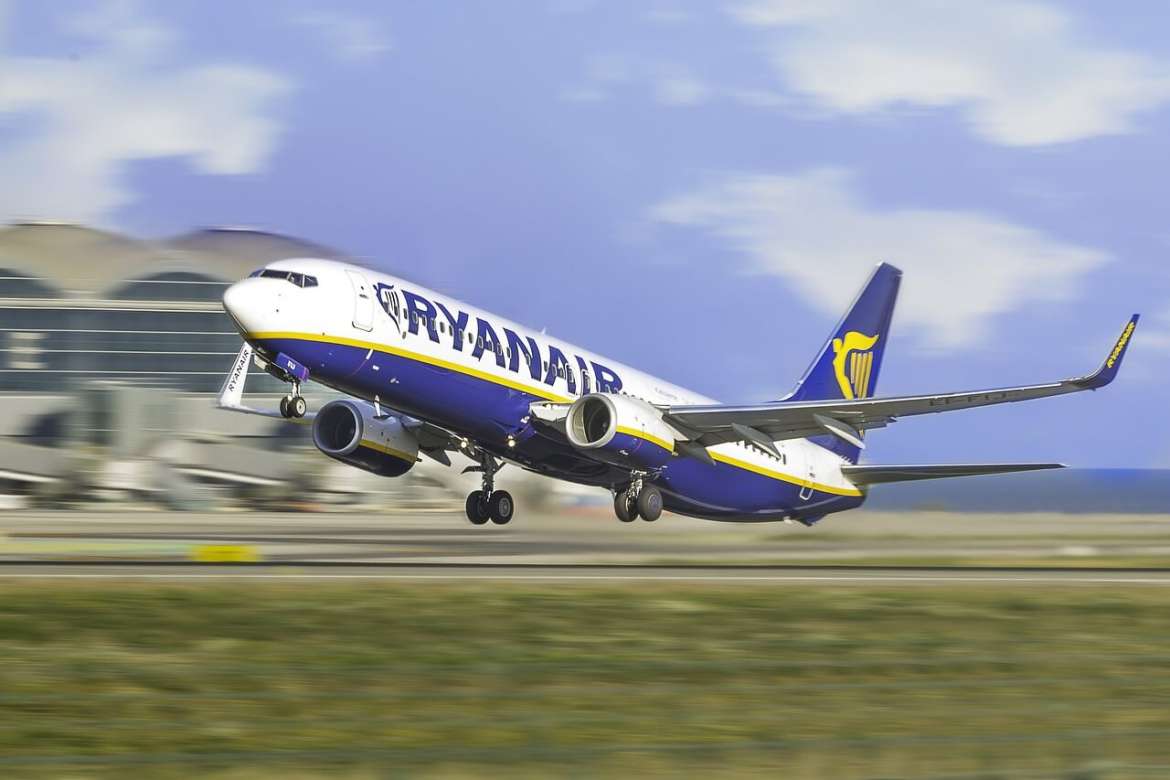
Credits: Pixabay
The Prime Minister reveals the National Recovery Plan
After a cabinet meeting which was held last Thursday, PM Andrej Plenkovic announced through a press conference all the details surrounding the National Recovery and Resilience Plan, which aims to reform and transform the country in regard to several different issues such as healthcare, employment, education, science and research, infrastructure, and more. The estimated investment would stand at 18 million kuna and the objective is to carry out these reforms within five years, more precisely between 2021 and 2026.
Plenkovic added that the plan consists of modernising scientific research and educational systems, increasing the quality of the healthcare and pension systems, improving employability through a more efficient programme, and carrying out the reconstruction and structural renovation of numerous homes and buildings in the country, in such a way that they are not only better prepared in case of natural disasters, but that they're also more adapted to the most recent demands for energy efficiency.
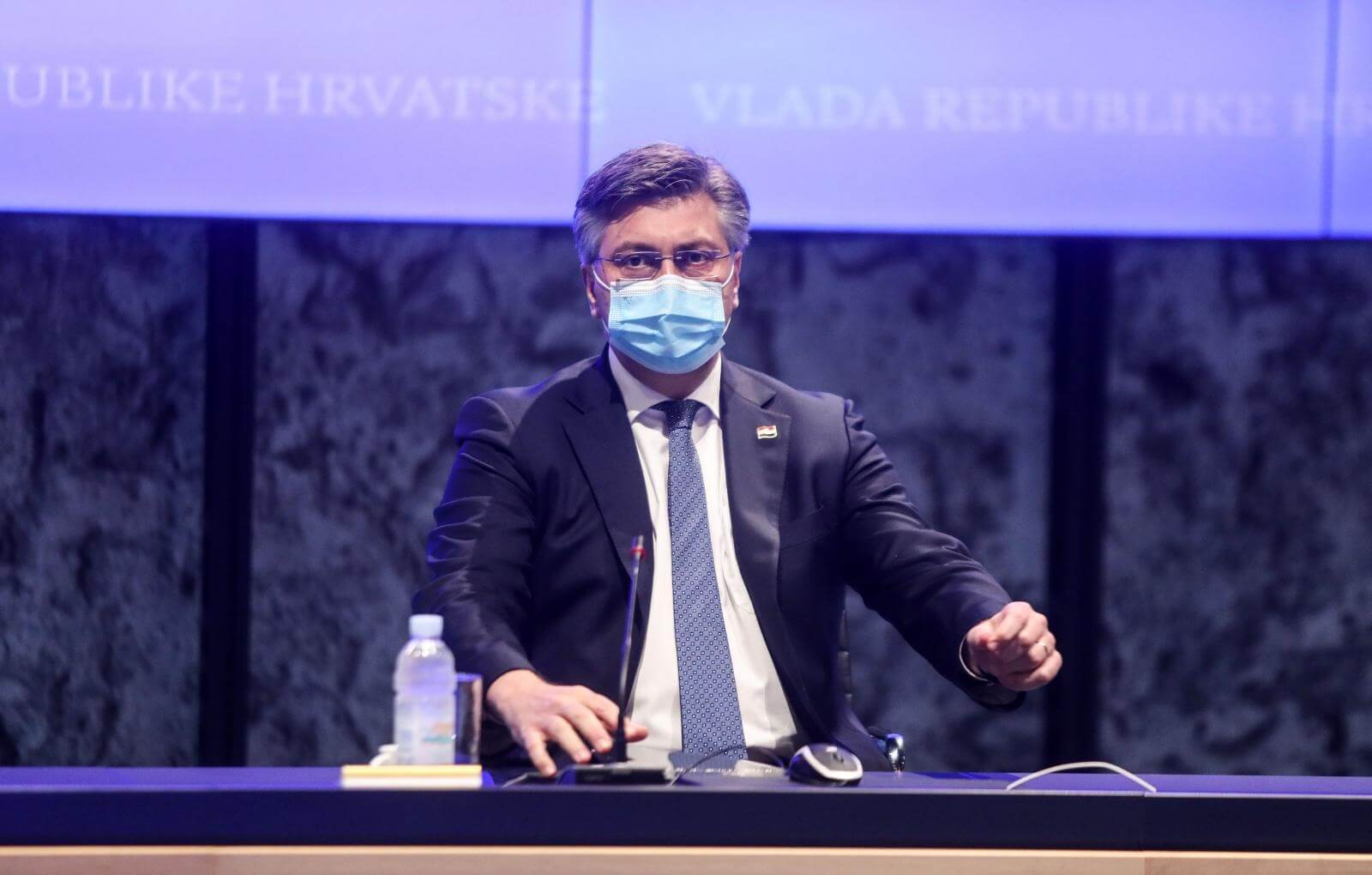
Zagreb (Credits: PIXSELL)
The traditional Za Krizen Procession was held on Jelsa
Despite the reduced capacity of followers and pilgrims this year due to the coronavirus pandemic, the island of Hvar celebrated its 2021 edition of its traditional Za Krizen (Behind the Cross) procession in the town of Jelsa, inscribed as intangible UNESCO heritage since 2009. TCN covered an event that usually gathers thousands of people around the island as they follow the carriers, but this year had to settle with only the participants and few witnesses in the streets.
The overnight processions were held in the towns of Jelsa, Pitve, Vrisnik, Svirce, Vrbanj, and Vrboska. The event started simultaneously in the six towns at 22:00 pm as the habitants have done for centuries, and ended at the main square.
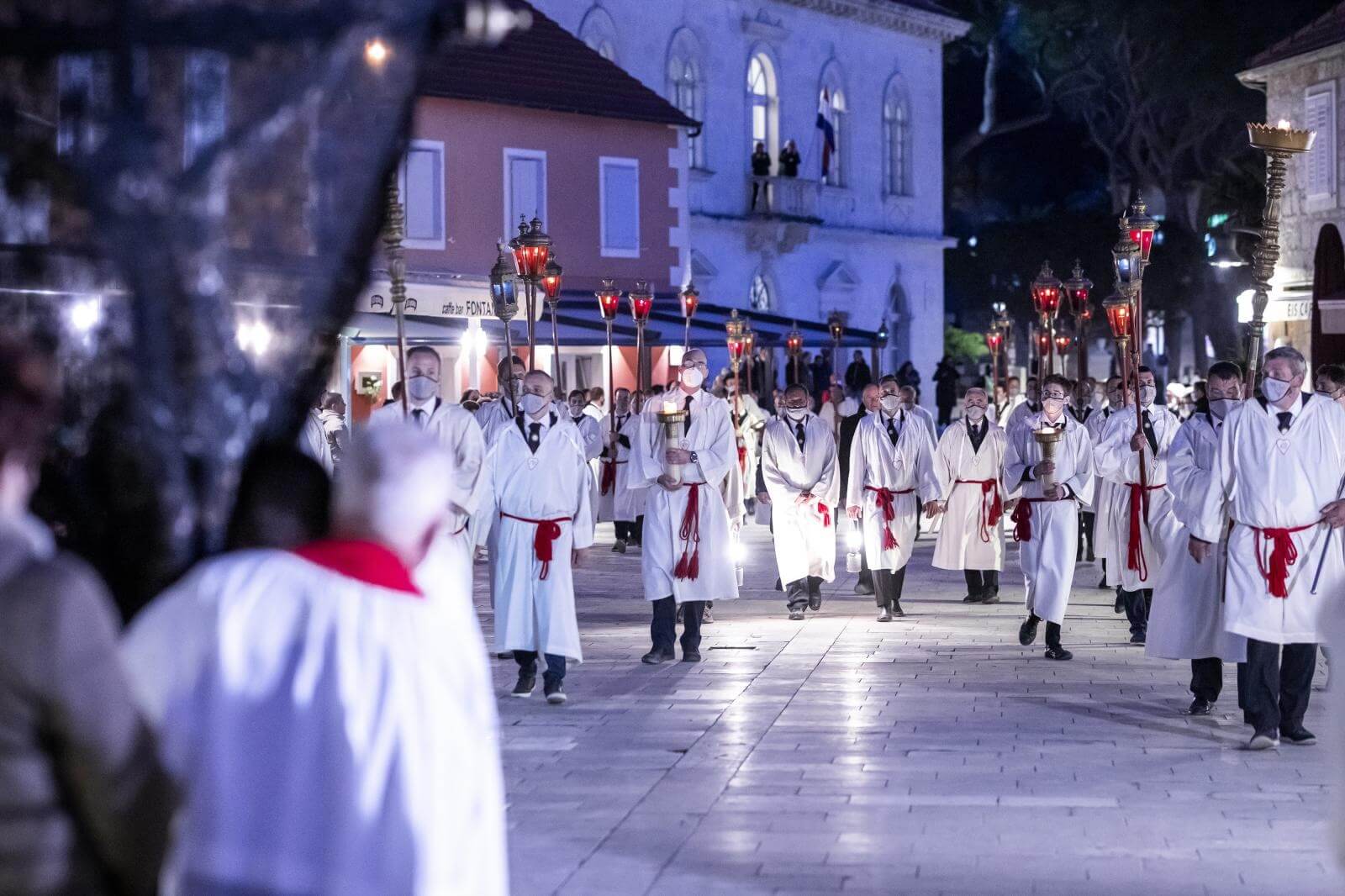
Jelsa (Credit: PIXSELL)
The measures against COVID-19 are tightened due to the large increase in cases
A month ago, all the cafes, bars, and restaurants in the country were reopened, after many weeks without serving their loyal customers, as an extreme measure to combat the virus. The condition was to serve only outdoors on the terraces and with a limited capacity. The streets were filled with life and joy again. However, one month later, the numbers have dramatically increased and although it is unlikely that a complete lockdown will be imposed again, the government has announced that new measures will take place in order to reduce the infections and it will last until 15 April, before being reviewed again.
In Split-Dalmatia County, for instance, which has seen a big increase in new infections, the mandatory wearing of face masks at outdoor venues with an increased flow of people will be introduced, as will a ban on the sale of alcohol from 8 pm to 6 am. The work of cafes will be restricted until 8 pm, and it will be possible to serve food and drinks only in the open. Foreign language schools will switch to online classes again.

Split (Credit: PIXSELL)
From Monday to Sunday, we list five events featured on the front pages of Croatia's news portals.
To follow all news from Croatia, subscribe to our newsletter.
Croatia Reports 2,234 New Coronavirus Cases, 29 Dead
April 3, 2021 - In the past 24 hours, 2,234 new coronavirus cases and 29 COVID deaths have been registered in Croatia, the national COVID-19 response team said on Saturday.
The number of active cases is 13,753, including 1,469 hospitalized patients, of whom 158 are on ventilators, while 34,965 people are self-isolating.
To date, Croatia has registered 278,650 coronavirus cases, 6,025 deaths, and 258,872 recoveries, including 1,563 in the past 24 hours.
To date, 1,575,650 people have been tested for the virus, including 7,623 in the past 24 hours, and 419,431 have been vaccinated against it, including 96,047 with both doses. For 1,634 people, there is no information as to whether they have received one or both doses.
For more about Covid-19 in Croatia, follow TCN's dedicated page.
China Exposes Croatian Kingdom of Accidental Tourism Reality
April 6, 2021 - Numbers, numbers, numbers. Or how China exposed the Croatian Kingdom of Accidental Tourism for what it really is.
Our journey starts back in May 2015, some two months before the launch of TCN.
I made a decision on one of our early portals, Total Split, to do an interview that I knew would be controversial and probably result in the loss of a number of readers, as well as possibly some 'friends'.
I decided that we would interview 'the most hated woman in Split' and give her some media space to give her side of the story after she had been vilified in the national media without having a right of reply.
It taught me an awful lot about free speech and hate speech in Croatia, as well as losing us quite a few readers and the recipient of a couple of death threats (or, as one delightful typo put it, death treats).
And I would do it again, exactly the same with the benefit of hindsight.
I didn't know Jacine Jadresko that well, but I always found her to be fun company. I didn't like the fact that she was very in your face about her hunting, but then I reasoned that I was a meat-eater, so maybe I was being hypocritical. Jacine went from being relatively obscure to a national hate figure overnight after photographs of her hunting escapades on Facebook surfaced in the Croatian media.
While I didn't necessarily agree with her stance, I also thought that in a (supposedly) democratic society, she was entitled to present her side of the story. And so we did an in-depth interview. And while the interview did not change my basic opinions on the subject, it did educate me and others (those who read further than the headline, that is) about some hunting issues. You can read it yourself here - Exclusive: Not Your Typical Split Chick...Huntress Jacine Jadresko in Her Own Words.
I thought of Jacine once more after a recent press release from the Croatian Kingdom of Accidental Tourism, celebrating 60 million viewers on Hainan TV watching a documentary about Croatia. I didn't realise that Hainan is that big (apparently it isn't - only 9 million people), but let's let that thing slide. I checked my analytics for unusual search traffic after the programme aired, as we do rank pretty well for most tourism topics for Croatia. Baidu is a more frequent visitor by the week, but for that particular time, nothing.
I thought of Jacine.
In the 6 years since that original interview was written. I get random spikes from all over the world in my analytics for Jacine's interview. We still rank well on Google for various keywords, and I have learned that a sudden spike in hits from Finland or Mexico is due to the fact that there is a documentary playing there about her. And as soon as it is over, interested people want to know more.
So with SIXTY MILLION viewers, how many people would be Baiduing for info about this wonderful Croatia?
Wait, did the Croatian Kingdom actually even offer their website in Chinese?
At first glance, it seemed that they didn't, but nothing is ever quite as it seems in the Croatian Kingdom of Accidental Tourism.
For there IS a Croatian National Tourist Board website in Chinese, which is so well hidden that several Croats living in China are not aware of its existence.
And it has the best destination page in the history of global tourism
Before we take a closer look at this little nugget of gold, you should know something about running a website with a big readership. The TCN server goes down occasionally, for a variety of factors. If the site is down for more than 10 minutes, I will typically have 5-10 messages informing me or complaining to me.
But here, it seems, nobody even noticed. Despite the sensational promotion watched by 60 million people.
And here is the best bit. Adobe stopped supporting this feature THREE months ago.
And nobody noticed.
The Kings have an established office and director (who I am told is very nice) in Shanghai, and a potential market of 1.3 billion people to attract to Croatia. And yet, despite all the chest-thumping of another amazing promotion. nobody noticed - or cared - that there was no accessible information about Croatian destinations on the official website. Quite why there is a separate website could be an interesting topic for next time.
Now I was intrigued. How was the Croatian Kingdom's social media presence in this vast market of 1.3 billion? They must have killed it with all those 60 million people gasping for more about this beautiful country.
Well...
I asked a Chinese friend to check out the most popular posts on Weibo (the Instagram equivalent). And she reported back that in the last 3 months, the biggest number of shares for a post on the official Kingdom Weibo account was...
586.
Not 586 million.
Not 586 thousand.
Just 586.
I don't use Instagram, and my 12-year-old daughter manages Insta for TCN between finishing her homework and going to bed. She gets more engagement in the 10 minutes a day she allocated to it.
So how is the big Croatian promotion going in Shanghai with a full office and director? As you can see from the screenshots from Weibo, rather well. The TV programme DID have an effect as 'most of the posts prior to that got only single-digit likes'.
Croatia has a full office and director and 25,971 fans.
Slovenia, the supposedly 'tiny' neighbour, has no office at all in China and 500,000 fans. More than 20 times more than Croatia, without the expense of an office. But then I suppose they don't get incredible promotion of Hainan TV to 60 million people.
Quite by chance, as part of our preparation for our new TC tourism website, going live on May 1 in 10 languages, including both simplified and traditional Chinese, my Chinese translator finished the first translation, the Top 10 things to do in Croatia in 2021. It was warmly received, and we shall be doing a lot more of the site in Chinese, both simplified and traditional.
So congratulations to the Kings of Accidental Tourism on yet another incredible promotion with a huge number.
As with every other pointless number to come out of the Croatian kingdom in the last 10 years, what does it actually mean?
Croatian Graduate Perspective: The View from Jelena in Split
April 3, 2021 – Continuing our Croatian Graduate Perspective series with Jelena in Split, explaining her experience in finding a job in a profession that has been in short supply in Croatia – speech and language therapy. "My colleagues have relatively positive experiences if they are in smaller places, but if it is a larger city, it is much harder to get a job," says Jelena. This is her full story.
With many young people emigrating from Croatia, what keeps those who decided to stay (at least for now)?
The emigration of young people from Croatia in search of better business opportunities and living standards, unfortunately, is a well-known story. Each of us young people in Croatia knows at least a few people from their environment who, at one point, said that enough was enough and decided to seek happiness somewhere abroad.
According to official Eurostat data, from 2015 to 2019, Croatia's population decreased by 4.26 inhabitants per 1,000 citizens only thanks to emigration. Therefore, the Croatian emigration rate is the second-worst in the European Union (after Lithuania).
These data indicate that economic prosperity influences population decisions to emigrate. Besides, due to the exodus of the young and working population, there is an additional reduction in GDP per capita that closes the cycle of poverty and decline in Croatia.
However, there are many who are aware of the poor position of young people in Croatia but still do not want to give up and decide to stay in Croatia. We're wondering what do those young people, recent graduates, think about this whole situation and what are their reasons for staying in Croatia?
We continue our series with Jelena from the Dalmatian capital - Split.
First of all, please introduce yourself. What are you studying/what did you study? Do you have a job currently?
My name is Jelena, and I come from Split. I have a master's degree in speech and language therapy, and I'm currently working in Zagreb, where I also studied.
What is it like being a student/recent graduate in Croatia during this coronavirus time?
I think this is a pretty weird year, both for studying and for looking for your first job. I believe that the transition from college to work was a bit easier for me, considering that my profession has mostly been in short supply for at least some time in Croatia. On the other hand, I see that many of my friends are still struggling to find a job in their profession.

What are your experiences searching for a job in your profession in Croatia?
My experience is quite good because as a student, I worked in the institution where I still work, but in a different position. After my studies, they decided to hire me as a speech and language therapist. That's why I can't really talk about some job search experience because everything went in some logical sequence. On the other hand, my colleagues have relatively positive experiences if they are in smaller places, but if it is a larger city, it is much harder to get a job.
What do you think of the Croatian Government's efforts to provide opportunities for graduates?
Croatia is relatively insensitive to unemployment and youth employment problems in general, so nothing was different with our generation. We [speech and language therapists] first do an internship before the first employment. This year, the Croatian Government passed provisions that do not announce competitions for internships, which puts us in a very difficult position.
Many young people your age decide to emigrate from Croatia to find a better job opportunity and/or life standard. What do you think about it?
I think that most young people who leave Croatia do so with heavy hearts, leaving their family and friends there, but unfortunately aware and probably disappointed in the system they're in. A couple of job competitions are enough to make us aware of how things work, and when you go through that for months and years, I believe they have no other options left.
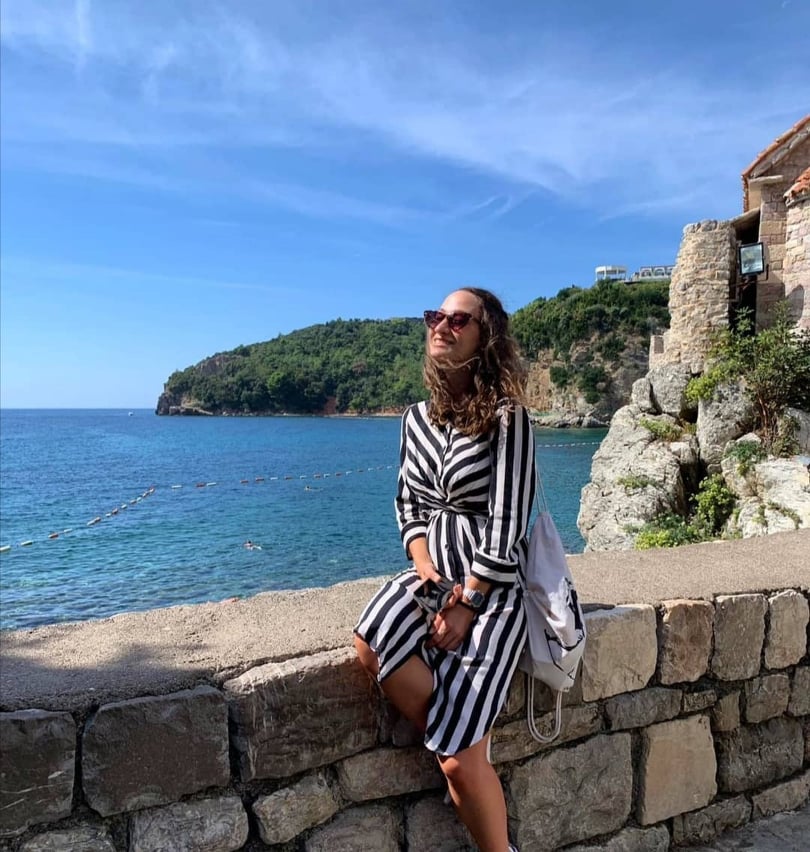
In your opinion, what would encourage young people to stay in Croatia?
I think that young people in Croatia would initially be encouraged by much greater employment opportunities. And then with much greater incentives to buy real estate, incentives to start a family, lower tax burdens, which are less than the rest of the country, but it is still too little.
Have you ever considered moving out of Croatia and why?
When I was younger, I was attracted to the idea of going and living somewhere outside of my country, but right now, it's the last thing I can imagine. On the other hand, never say never.
As a recent graduate, what is your impression of the education system in Croatia? What do you think is good about it and what could be better?
The education system in Croatia is very outdated and is changing very slowly. I think we start from the wrong foundations from kindergarten and elementary school, and then everything builds on that. Faculty is mostly the culmination of theoretical learning and stress with minimal practice. The only thing that really prepares you for work is realizing that you need to be very proactive and independent, so for those motivated, it is a very valuable experience for future jobs.
Based on your own experience, can you say that everything is possible in Croatia if you work hard, work on yourself, are educated and ambitious?
So if I follow my example and consider it a success for an excellent student to find a job in the profession after graduation, then yes. The other side is the amount of energy, work, and effort invested in the whole education, and then the work and the financial aspect that is a product of that. The social sciences and humanities in Croatia are still significantly underestimated and even underpaid. I believe that the amount of effort, ambition, and education in Croatia, unfortunately, does not ensure proportional success.

If you could change only one thing in Croatia, what would it be, and why do you think it's important?
If I could change one thing in Croatia, it would be the corruption that is deeply rooted in our society.
As a young Croatian, what are you most proud of in Croatia?
I am most proud of all Croatian residents' successes in every aspect (sports, academic, business) despite minimal state assistance.
Are you optimistic or pessimistic about the future of Croatia, and will it be a better or worse place for your children?
I am mostly pessimistic about the future because the changes are small and slow, and this system of living and working is unfortunately unsustainable.
Are you a student or recent graduate who would like to contribute your voice and experiences to this series? If yes, please contact This email address is being protected from spambots. You need JavaScript enabled to view it. with the subject "Graduate."
To read more from the Croatian Graduate Perspective series, follow TCN's dedicated page.
COVID Crisis Has Cost Us €4.3Bn So Far, Says FinMin
April 3, 2021 - The financial effect of the COVID-19 crisis on the state budget is over HRK 32 billion, according to Finance Minister Zdravko Marić.
The drop in revenues accounts for about HRK 13 billion of that amount, including measures to write off taxes and contributions, while direct expenditures and outlays due to the pandemic account for over HRK 19 billion, Marić said.
Job retention measures account for the bulk of direct expenditures, with HRK 10 billion paid to date, while about HRK 2 billion has been set aside for additional healthcare expenses. Most of the rest pertains to liquidity maintenance budgetary transfers to the Croatian Health Insurance Fund and local government, and to the Croatian Bank for Reconstruction and Development and the HAMAG agency for SMEs for their credit lines.
"We have utilized EU grants in the amount of HRK 5.9 billion, most of which from the REACT-EU package for job retention," Marić said.
However, he added, when the total financial effect of the COVID crisis is taken into account, "it's clear that so far the bulk of the cost has been at the expense of the state budget, i.e. borrowing. That affected the public debt-to-GDP ratio, which reached 89.1% at the end of 2020."
Tax revenues and contributions are coming into the state budget as expected, he said. "Such trends give us a certain optimism that the whole economy is continually adapting to the new situation and that the planned economic recovery, and thereby the consolidation of public finance, will not be significantly undermined."
Still, the continuation of the COVID crisis additionally accentuates uncertainty, notably regarding budget expenditures, Marić said, adding that he was primarily referring to ensuring additional funds for job retention and for the problems in healthcare.
He said it was also necessary to find the money for a 4% base pay rise for public sector workers and that he hoped budget beneficiaries would cut costs sufficiently to that end.
To read more about news in Croatia, follow TCN's dedicated page.
Croatia Joins List of Countries Open to Vaccinated Travelers
April 3, 2021 - As the Afar travel magazine reports, Croatia, Ecuador, Montenegro, and Iceland are the latest additions to the list of countries open to vaccinated travelers.
It’s no joke. As of April 1, anyone can travel to Croatia if they present a COVID-19 vaccination certificate (the final dose must be administered at least 14 days before arrival); can present a negative COVID-19 PCR or antigen test taken no more than 48 hours prior to arrival in Croatia (if it’s a rapid test, a second test must be taken 10 days after the initial test if your stay in Croatia is longer than 10 days); or were diagnosed with and recovered from COVID-19 no more than 180 days prior to arrival. Children under seven years of age are exempt.
The U.S. Embassy in Croatia reminds travelers that tourists who meet the above requirements will only be permitted to enter Croatia if they provide evidence that they have paid for their Croatia accommodations in advance and in full prior to arrival at the border.
The European country of Croatia is the latest destination to open to travelers vaccinated against COVID-19 as vaccine rollouts continue in the United States and abroad.
Effective April 1, anyone who presents a COVID-19 vaccine certificate can enter Croatia, according to the latest update from the Croatian Government’s Ministry of Interior. You can also enter with a negative COVID test result or if you have recovered from COVID-19.
The move is the latest in a series of updated government policies - issued by countries that include Belize, Ecuador, Iceland, and Seychelles - that have in recent weeks given permission to vaccinated travelers to visit. The new protocols typically allow vaccinated travelers to bypass otherwise mandatory quarantine and testing measures. There is an ongoing debate about whether vaccinations should be a passport to entry for travelers - in many cases countries also have alternative protocols for unvaccinated travelers, such as the option to submit to a COVID-19 testing requirement.
Check Total Croatia's guide to COVID-19 in Croatia for daily updates about coronavirus, as well as the latest travel rules in Croatia.
Croatia Acts to Save Its Iconic Istrian Goat
April 3, 2021 - As Phys.org reports, with wavy horns and a sturdy build, the Istrian goat stands proudly on Croatia's national flag. But in the pastures where the white-furred animal hails from, the breed is almost nowhere to be seen.
For centuries, the domestic goat was a staple of rural life on Croatia's Istria peninsula, an enchanting region home to rolling hills and picturesque coastline. But from a population in the thousands in the mid-20th century, the goat's numbers have dwindled down to a few dozen, prompting local authorities to launch a conservation programme with the help of local breeders.
"It is crucial to preserve the Istrian goat since it is an indigenous breed," said Ivan Milohanic, a 32-year-old bus driver, whose herd of goats includes some 20 of the heavy-set white Istrians.
The goats are milked by hand and graze for a few hours daily at a meadow close to the Milohanic family's farmhouse, where he also grows olives, grapes, and hosts tourists.
"Also, there is a strong interest in genuine natural products," he added, noting the health benefits of goat's milk and meat.
Milohanic, one of a handful of local breeders raising the goats, started years ago and aspires to run a small cheese factory in the future.
Milk and meat
The animals were for many years a key food resource, providing milk and meat for villagers too poor to afford a cow or sheep.
"There was practically no farm without some goats," said Boro Mioc, a professor at the Zagreb University Faculty of Agronomy, who is helping the revitalisation project.
Known as agile and intelligent, goats were the first animal to be milked by man, he added. In times of hardship, such as during wars or hunger, the "poor man's cow" helped villagers survive due to their modest needs regarding food and shelter. They were also easy to bring along if the owner needed to flee.
"Goats were always a symbol of poverty but also of the preservation of family," said Gordan Subara, of the government's agency for Istria's rural development, in charge of the rehabilitation project.
The death of a goat was once a tragedy for an average Istrian family. But laws in the 19th and 20th centuries practically banned keeping the animals, which were considered forest-destroying pests, causing the population to shrink dramatically. In recent decades, the movement of people to urban areas and the development of tourism as a source of income have further reduced reliance on animals.
'Return our debt'
The local revitalisation project started in 2010 with experts carrying out genetic analysis to confirm the Istrian breed still existed with a view to adding it to Croatia's list of indigenous and protected species. That followed two years later. Local authorities are now studying around 30 breeding goats to prevent mating of close relatives, with hopes that artificial insemination can also help double the population annually to reach 1,000 within a decade.
"The most important goal is to return our debt towards this animal, whom we proclaimed a pest without justification," Subara told AFP.
This year, they also plan to buy up any Istrian baby goats in the region to prevent their slaughter.
While Istria has changed hands several times over the centuries, the goat has remained an enduring symbol, featuring on the region's coat of arms while it was a part of the Austro-Hungarian Empire and Italy. After Croatia's independence from Yugoslavia in 1991, a yellow goat with red horns and hooves was incorporated onto both Istria and the national flag, as well as both coat of arms.
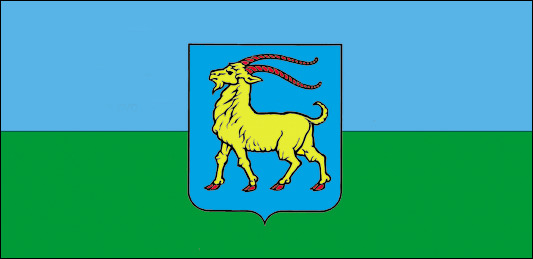
Istrian goat on the Istrian coat of arms and flag / Istra.hr
"Preserving that symbolism is also very important," Subara stressed.
Tourist attraction
Another ray of hope for the goats may lie in tourism. Olgica Skopac, whose farm is nestled between the picturesque hilltop town of Labin and the coastal resort of Rabac, used two does and a buck to clear her land a few years ago instead of machinery. Now the animals are an additional draw for the tourists who stay in apartments on her farm.
"We are renewing a traditional rural household on nature's doorstep," said the energetic 66-year-old, who with her husband grows olives and keeps some 20 Istrian sheep, three donkeys, and several goats.
If not going to nearby beaches, tourists can enjoy a sea view from the terrace of the Skopacs' house or hike in the forest surrounding it. Many visitors are also interested in animals kept in barns in a nearby valley.
"They ask questions so we spread the popularity of our Istrian goat," the smiling woman told AFP, cuddling a goat kid in her arms.
Mioc, the professor, is convinced that the Istrian goat has "a future," but adds: "We have to save it first."
To read more about lifestyle in Croatia, follow our dedicated page.


